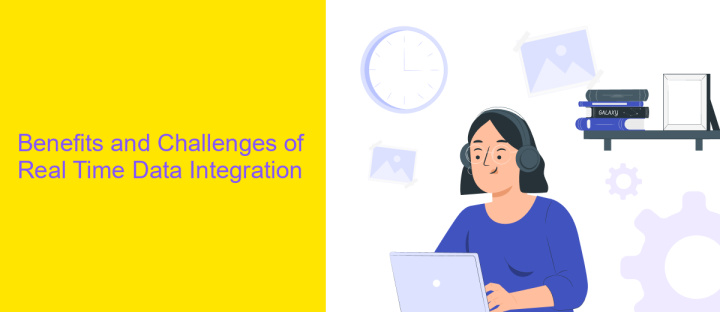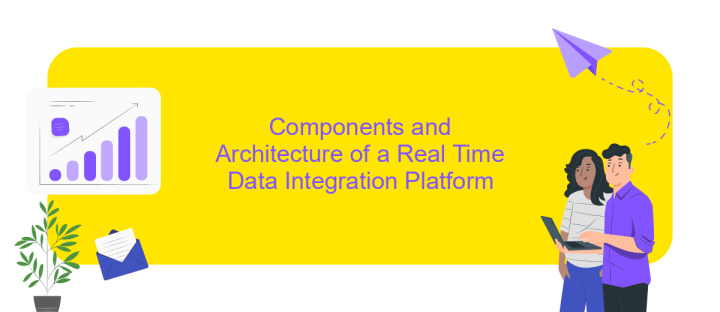Real Time Data Integration Platform
In today's fast-paced digital landscape, real-time data integration is crucial for businesses seeking to stay competitive and make informed decisions. A Real Time Data Integration Platform enables seamless data flow between diverse systems, ensuring timely and accurate information. This article explores the features, benefits, and implementation strategies of such platforms, helping organizations harness the power of real-time data.
Introduction
In today's fast-paced digital landscape, the ability to integrate and process data in real-time is crucial for businesses aiming to stay competitive. Real Time Data Integration Platforms offer a seamless way to connect disparate data sources, enabling organizations to make informed decisions swiftly. By leveraging these platforms, companies can ensure data consistency, improve operational efficiency, and enhance customer experiences.
- Seamless integration of multiple data sources
- Real-time data processing and analytics
- Enhanced data consistency and accuracy
- Improved decision-making capabilities
- Scalability to handle growing data volumes
Adopting a Real Time Data Integration Platform can transform how businesses manage their data ecosystems. These platforms not only facilitate immediate access to critical information but also support scalable solutions that grow with the organization. As a result, companies can respond more rapidly to market changes, optimize their operations, and deliver superior value to their customers.
Benefits and Challenges of Real Time Data Integration

Real-time data integration offers significant benefits, including enhanced decision-making capabilities, improved customer experiences, and increased operational efficiency. By providing up-to-the-minute data, businesses can respond swiftly to market changes, optimize processes, and personalize services. Tools like ApiX-Drive facilitate seamless integration by connecting various applications and automating data flows, ensuring that information is consistently accurate and up-to-date. This real-time connectivity enables companies to leverage data insights immediately, fostering a more agile and competitive business environment.
However, implementing real-time data integration also presents several challenges. Ensuring data quality and consistency across disparate sources can be complex, requiring rigorous validation and cleansing processes. Additionally, the need for robust security measures to protect sensitive information from breaches is paramount. Scalability is another concern, as the system must handle increasing data volumes without compromising performance. Overcoming these challenges often necessitates a combination of advanced technologies and skilled personnel, as well as reliable integration platforms like ApiX-Drive, which streamline the setup and maintenance of real-time data connections.
Components and Architecture of a Real Time Data Integration Platform

A Real Time Data Integration Platform is a sophisticated system designed to seamlessly integrate and process data from various sources in real-time. This platform ensures that data is consistently updated and available for immediate analysis, providing businesses with the most current insights. The architecture is typically modular, allowing for scalability and flexibility to adapt to different data sources and processing requirements.
- Data Ingestion: This component is responsible for collecting data from multiple sources, such as databases, APIs, and streaming services, in real-time.
- Data Processing: Once ingested, the data is processed using various techniques like filtering, transformation, and enrichment to ensure it meets the required standards.
- Data Storage: Processed data is then stored in real-time databases or data warehouses optimized for quick retrieval and analysis.
- Data Integration: This component ensures that data from different sources is combined and made available in a unified format for downstream applications.
- Monitoring and Management: Continuous monitoring and management tools are essential to ensure the platform operates efficiently and any issues are promptly addressed.
The architecture of a Real Time Data Integration Platform is designed to be highly resilient and scalable, allowing businesses to handle large volumes of data with minimal latency. By integrating various components effectively, organizations can achieve real-time data insights, driving more informed decision-making processes.
Use Cases and Applications of Real Time Data Integration

Real-time data integration platforms are essential for businesses that require up-to-the-minute information to make informed decisions. These platforms enable the seamless transfer and synchronization of data across various systems and applications, ensuring that organizations have access to the most current data available.
One of the primary use cases for real-time data integration is in the financial sector, where timely data is crucial for trading, risk management, and compliance. Additionally, e-commerce companies rely on these platforms to provide real-time inventory updates and personalized customer experiences.
- Financial trading and risk management
- E-commerce inventory and customer personalization
- Healthcare patient monitoring and diagnostics
- Telecommunications network management
- Smart city infrastructure and traffic management
By leveraging real-time data integration, organizations can enhance their operational efficiency, improve customer satisfaction, and gain a competitive edge. This technology is becoming increasingly vital across various industries, enabling businesses to respond quickly to changing conditions and make data-driven decisions with confidence.


Best Practices and Considerations for Implementing a Real Time Data Integration Platform
When implementing a real-time data integration platform, it's crucial to prioritize data accuracy and consistency. Ensure that your data sources are reliable and that the integration platform can handle the data volume and velocity. Establishing robust data validation and error-handling mechanisms will help maintain data integrity. Additionally, consider the scalability of your platform to accommodate future growth and evolving business needs.
Another best practice is to leverage automation tools like ApiX-Drive to streamline the integration process. ApiX-Drive can automate data transfers between various applications and services, reducing manual intervention and minimizing errors. It's also essential to monitor the performance of your integration platform regularly and optimize it for efficiency. Ensure that security measures are in place to protect sensitive data, including encryption and access controls. By following these practices, you can create a reliable and efficient real-time data integration platform that supports your business objectives.
FAQ
What is Real Time Data Integration?
Why is Real Time Data Integration important?
How does Real Time Data Integration work?
What are the challenges of implementing Real Time Data Integration?
Are there tools available to simplify Real Time Data Integration?
Time is the most valuable resource in today's business realities. By eliminating the routine from work processes, you will get more opportunities to implement the most daring plans and ideas. Choose – you can continue to waste time, money and nerves on inefficient solutions, or you can use ApiX-Drive, automating work processes and achieving results with minimal investment of money, effort and human resources.

